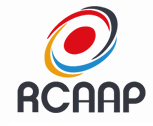Molecular detection of Sarcocystis spp. in the breast muscle of captive birds from the southern region of Brazil
DOI:
https://doi.org/10.5433/1679-0359.2023v44n1p135Keywords:
Sarcocystis, PCR, Captive birds, Naturally infected.Abstract
Studies on diseases of wild birds are essential in the context of public health, as these animals act as sentinels, allowing information regarding a determined geographic area. In addition, birds are food protein sources for animals, and therefore play an important role in the life cycle of the protozoan Sarcocystis spp. This study aimed to identify the Sarcocystis spp. in breast muscle samples of naturally infected captive birds. The breast muscle of 89 birds were sampled, and the DNA amplified by PCR targeting the 18S ribosomal RNA gene to detect Sarcocystis spp. PCR products were sequenced and 5.61% (5/89) samples showed 100% similarity with Sarcocystis spp. (one Cyanoliseus patagonus, one Psittacula krameri, two Pyrrhura frontalis, and one Ramphastos dicolorus). The large number of naturally infected species analyzed by molecular methods allowed the detection of Sarcocystis spp. in different bird species, corroborating the epidemiology of Sarcocystis spp.
Downloads
References
Bamac, O. E., Rogers, K. H., Arranz-Solís, D., Saeij, J. P., Lewis, S., Duerr, R., Skoglund, J., Peronne, L., & Mete, A. (2020). International Journal for Parasitology: Parasites and Wildlife, 12, 185-191. doi: 10.1016/j.ijppaw.2020.06.005 DOI: https://doi.org/10.1016/j.ijppaw.2020.06.005
Box, E. D., & Smith, J. H. (1982). The intermediate host spectrum in a Sarcocystis species of birds. Journal of Parasitology, 68, 668-673. doi: 10.2307/3280926 DOI: https://doi.org/10.2307/3280926
Dubey, J. P., Calero-Bernal, R., Rosenthal, B. M., Speer, C. A., & Fayer, R. (2016). Sarcocystosis of animals and humans (2nd ed.). CRC Press. DOI: https://doi.org/10.1201/b19184
Dubey, J. P., Lane, E., & Van Wilpe, E. (2004). Sarcocystis ramphastosi sp. nov. and Sarcocystis sulfuratusi sp. nov. (Apicomplexa, Sarcocystidae) from the keel-billed toucan (Ramphastos sulfuratus). Acta Parasitologica, 49(2), 93-101.
Dubey, J. P., Lindsay, D. S., Rezende, P. C. B., & Costa, A. J. (2000). Characterization of an unidentified Sarcocystis falcatula-like parasite from the South American opossum, Didelphis albiventris from Brazil. Journal of Eukaryotic Microbiology, 47(6), 538-544. doi: 10.1111/j.1550-7408.2000.tb00087.x DOI: https://doi.org/10.1111/j.1550-7408.2000.tb00087.x
Dubey, J. P., Lindsay, D. S., Rosenthal, B. M., Kerber, C. E., Kasa, N., Pena, H. F., Kwok, O. C., Shen, S. K., & Gennari, S. M. (2001b). Isolates of Sarcocystis falcatula-like Organisms from South American Opossums Didelphis marsupialis and Didelphis albiventris from São Paulo, Brazil. Journal of Parasitology, 87(6), 1449-1453. doi: 10.1645/0022-3395(2001)087[1449:IOSFLO]2.0.CO;2 DOI: https://doi.org/10.1645/0022-3395(2001)087[1449:IOSFLO]2.0.CO;2
Dubey, J. P., Morales, J. A., Leandro, D., & Rosenthal, B. M. (2008). Molecular phylogeny implicates new world opossums (Didelphidae) as the definitive hosts of Sarcocystis ramphastosi, a parasite of the keel-billed toucan (Ramphastos sulfuratus). Acta Protozoologica, 47(1), 55-61.
Dubey, J. P., Rosenthal, B. M., & Felix, T. A. (2010). Morphologic and molecular characterization of the Sarcocysts of Sarcocystis rileyi (Apicomplexa: Sarcocystidae) from the mallard duck (Anas platyrhynchos). Journal of Parasitology, 96(4), 765-770. doi: 10.1645/GE-2413.1 DOI: https://doi.org/10.1645/GE-2413.1
Dubey, J. P., Rosenthal, B. M., & Speer, C. (2001a). Sarcocystis lindsayi n. sp. (Protozoa: Sarcocystidae) from the South American opossum, Didelphis albiventris from Brazil. Journal of Eukaryotic Microbiology, 48(5), 595-603. doi: 10.1111/j.1550-7408.2001.tb00196.x DOI: https://doi.org/10.1111/j.1550-7408.2001.tb00196.x
Dubey, J. P., Verma, S. K., Dunams, D., Calero-Bernal, R., & Rosenthal, B. M. (2015). Molecular characterization and development of Sarcocystis speeri sarcocysts in gamma interferon gene knockout mice. Parasitology, 142(13), 1555-1562. doi: 10.1017/S0031182015001109 DOI: https://doi.org/10.1017/S0031182015001109
Ecco, R., Luppi, M. M., Malta, M. C. C., Araújo, M. R., Guedes, R. M. C., & Shivaprasad, H. L. (2008). An outbreak of Sarcocystosis in Psittacines and a pigeon in a zoological collection in Brazil. Avian Diseases, 52(4), 706-710. doi: 10.1637/8303-040408-Case.1 DOI: https://doi.org/10.1637/8303-040408-Case.1
Gallo, S. S. M., Lindsay, D. S., Ederli, N. B., Matteoli, F. P., Venancio, T. M., & Oliveira, F. C. R. de. (2018). Identification of opossums Didelphis aurita (Wied-Neuweid, 1826) as a definitive host of Sarcocystis falcatula-like sporocysts. Parasitology Research, 117, 213-223. doi: 10.1007/s00436-017-5695-4 DOI: https://doi.org/10.1007/s00436-017-5695-4
Gjerde, B., Vikøren, T., & Hamnes, I. S. (2018). Molecular identification of Sarcocystis halieti n. sp., Sarcocystis lari and Sarcocystis truncata in the intestine of a white-tailed sea eagle (Haliaeetus albicilla) in Norway. International Journal of Parasitolology: Parasites Wildlife, 7(1), 1-11. doi: 10.1016/j.ijppaw.2017.12.001 DOI: https://doi.org/10.1016/j.ijppaw.2017.12.001
Godoy, S. N., Paula, C. D. de, Cubas, Z. S., Matushima, E. R., & Catão-Dias, J. L. (2009). Occurrence of Sarcocystis falcatula in captive psittacine birds in Brazil. Journal of Avian Medicine and Surgery, 23(1), 18-23. doi: 10.1647/2008-006R.1 DOI: https://doi.org/10.1647/2008-006R.1
Konell, A. L., Sato, A. P., Stival, M., Malaguini, N. P., Anjos, A. dos, Ferreira, R. F., & Locatelli-Dittrich, R. (2019). Serosurvey of Toxoplasma gondii, Sarcocystis sp. and Neospora caninum in geese (Anser sp.) from urban parks and captivity. Brazilian Journal of Veterinary Parasitology, 28(2), 221-228. doi: 10.1590/S1984-29612019042 DOI: https://doi.org/10.1590/s1984-29612019042
Konradt, G., Bianchi, M. V., Leite, R. V., Fº., Silva, B. Z. da, Soares, R. M., Pavarini, S. P., & Driemeier, D. (2017). Necrotizing meningoencephalitis caused by Sarcocystis falcatula in bare-faced ibis (Phimosus infuscatus). Parasitology Research, 116, 809-812. doi: 10.1007/s00436-016-5341-6 DOI: https://doi.org/10.1007/s00436-016-5341-6
Kutkienė, L., Prakas, P., Sruoga, A., & Butkauskas, D. (2012). Description of Sarcocystis anasi sp. nov. and Sarcocystis albifronsi sp. nov. in birds of the order Anseriformes. Parasitology Research, 110, 1043-1046. doi: 10.1007/s00436-011-2588-9 DOI: https://doi.org/10.1007/s00436-011-2588-9
Llano, H. A. B., Polato, H. Z., Keid, L. B., Oliveira, T. M. F. S., Zarwarg, T., Oliveira, A. S., Sanches, T. C., Joppert, A. M., Gondim, L. F. P., & Soares, R. M. (2022). Molecular screening for Sarcocystidae in muscles of wild birds from Brazil suggests a plethora of intermediate hosts for Sarcocystis falcatula. International Journal for Parasitolology: Parasites Wildlife, 17, 230-238. doi: 10.1016/j.ijppaw.2022.03.002 DOI: https://doi.org/10.1016/j.ijppaw.2022.03.002
Miescher, E. (1843). Uber eigenthumliche schlãuche in den muskeln einer hausmaus. Berl. Verh. Naturforsch. Ges. Basel., Augsburg, 5: 198-202, 1843 apud Levine, N. D. (1977) Nomenclature and of Sarcocystis in the ox and sheep and of fecal coccidia of the dog and cat. Journal of Parasitology, 63(1), 38-51.
Moré, G., Abrahamovich, P., Jurado, S., Bacigalupe, D., Marin, J. C., Rambeaud, M., Venturini, L., & Venturini, M. C. (2011). Prevalence of Sarcocystis spp. in Argentinean cattle. Veterinary Parasitology, 177(1-2), 162-165. doi: 10.1016/j.vetpar.2010.11.036 DOI: https://doi.org/10.1016/j.vetpar.2010.11.036
Olias, P., Olias, L., Lierz, M., Mehlhorn, H., & Gruber, A. D. (2010). Sarcocystis calchasi is distinct to Sarcocystis columbae sp. nov. from the wood pigeon (Columba palumbus) and Sarcocystis sp. from the sparrow hawk (Accipiter nisus). Veterinary Parasitology, 171(1-2), 7-14. doi: 10.1016/j.vetpar.2010.03.021 DOI: https://doi.org/10.1016/j.vetpar.2010.03.021
Parmentier, S. L., Maier-Sam, K., Failing, K., Gruber, A. D., & Lierz, M. (2019). High prevalence of Sarcocystis calchasi in racing pigeon flocks in Germany. PloS One, 14(4), e0215241-x. doi: 10.1371/journal.pone.0215241 DOI: https://doi.org/10.1371/journal.pone.0215241
Prakas, P., Oksanen, A., Butkauskas, D., Sruoga, A., Kutkienė, L., Švažas, S., & Butkauskas, D. (2014). Identification and intraspecific genetic diversity of Sarcocystis rileyi from ducks, Anas spp., in Lithuania and Finland. Journal for Parasitology, 100(5), 657-661. doi: 10.1645/13-395.1 DOI: https://doi.org/10.1645/13-395.1
Rêgo, W. M. F., Costa, J. G. L., Baraviera, R. C. A., Pinto, L. V., Bessa, G. L., Lopes, R. E. N., Silveira J. A. G. da, & Almeida Vitor, R. W. (2021). Sarcocystidae in wild birds of southeastern Brazil. Revista Brasileira de Parasitologia Veterinária, 30(1). doi: 10.1590/S1984-296120201094 DOI: https://doi.org/10.1590/s1984-296120201094
Yang, Z., Zuo, Y., Yao, Y., Chen, X., Yang, G., & Zhang, Y. (2001). Analysis of the 18S rRNA genes of Sarcocystis species suggests that the morphologically similar organisms from cattle and water buffalo should be considered the same species. Molecular and Biochemical Parasitology, 115, 283-288. doi: 10.1016/s0166-6851(01)00283-3 DOI: https://doi.org/10.1016/S0166-6851(01)00283-3
Downloads
Published
How to Cite
Issue
Section
License
Copyright (c) 2023 Semina: Ciências Agrárias

This work is licensed under a Creative Commons Attribution-NonCommercial 4.0 International License.
Semina: Ciências Agrárias adopts the CC-BY-NC license for its publications, the copyright being held by the author, in cases of republication we recommend that authors indicate first publication in this journal.
This license allows you to copy and redistribute the material in any medium or format, remix, transform and develop the material, as long as it is not for commercial purposes. And due credit must be given to the creator.
The opinions expressed by the authors of the articles are their sole responsibility.
The magazine reserves the right to make normative, orthographic and grammatical changes to the originals in order to maintain the cultured standard of the language and the credibility of the vehicle. However, it will respect the writing style of the authors. Changes, corrections or suggestions of a conceptual nature will be sent to the authors when necessary.















